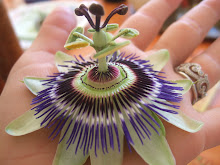We climbed the Route de Napoleon from Grasse into the forested
foothills of the Alps to pay the buffalo that roam the Haut-Thorenic a
visit. It was November but in the
mountains winter had already encrusted itself. My husband and I slipped on every last stitch of warm
clothing we’d brought before negotiating the last available slots for the
afternoon safari.
 |
| European Buffalo and Ecolodge |
After our small group assembled at the camp playground, we weren’t
more than a dozen, we set out on foot into the sprawling 700-acre pasture of
the Monts d’Azur reserve. Our
guide spoke of the temperament of the herd of European buffalo as we approached
referring to partners and their offspring by name as you would friends. No, these
buffalo (bison in French) weren’t native. Imported from Poland in 2005 on an
initiative to increase the endangered population’s numbers, the herd has since doubled. We stood only a few meters away from
these largest of the land mammals yet the herd paid us no mind.
I could have spent the day admiring those relics of prehistory but our
guide suggested we travel a kilometer downwind to where the wild Przewalki horses were exhibiting frisky behavior that he
wanted to investigate. We followed
eagerly, stopping to identify flora and fauna while the youngest in our group,
a pair of elementary school-aged children, continued their barrage of questions. With each informed response it became
more apparent. The scraggly 20-something
we were following wasn’t just any tour guide; he was a naturalist. The patience with which he responded was
as much a product of his nature study as the knowledge he shared.
Winter in the mountains is cold and by the home stretch of our two-hour
safari when we encountered a flock of water birds my feet were too frozen for
me to care much about their habits.
I was happy to see the camp gate being opened and ducked into the lodge
for a therapeutic cup of hot chocolate.
The next time I pay the reserve a visit will be during the summer
when it is warm enough to camp out in the park. They offer tent rentals (on a platform safe from stampede),
catered picnics, horse drawn buggy rides and “safari” hikes like the one I
took. Hotel rooms are also
available but lack the resort appeal to be enticing. Definitely book your visit ahead of time as tours seem to
fill up. Though it’s only an hour
away from the Riviera you don’t want to make the trip for nothing. Prices range from 25 Euros for a safari
hike to 260 Euros for an Adventure package for two that includes dinner,
lodging in an eco tent, a safari and a buggy ride.





.jpg)





